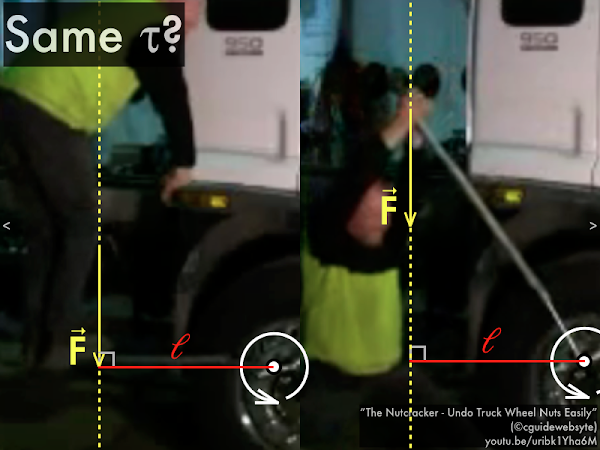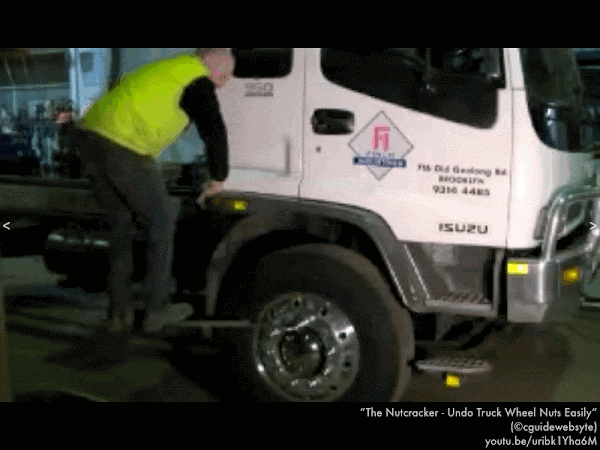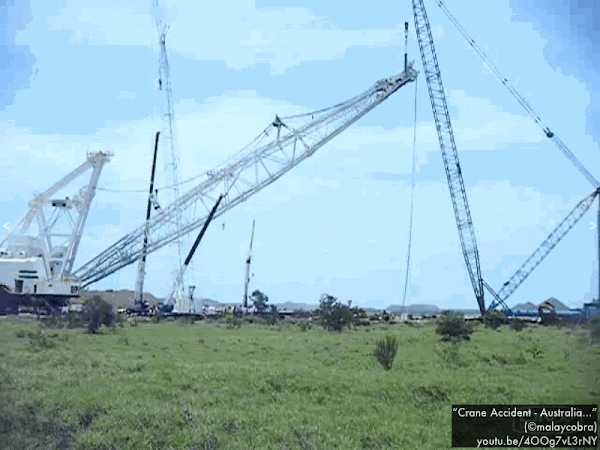Cuesta College, San Luis Obispo, CA
Students have a bi-weekly online reading assignment (hosted by SurveyMonkey.com), where they answer questions based on reading their textbook, material covered in previous lectures, opinion questions, and/or asking (anonymous) questions or making (anonymous) comments. Full credit is given for completing the online reading assignment before next week's lecture, regardless if whether their answers are correct/incorrect. Selected results/questions/comments are addressed by the instructor at the start of the following lecture.
The following questions were asked on reading textbook chapters and previewing a presentation on torque and rotations.

Selected/edited responses are given below.
Describe what you understand from the assigned textbook reading or presentation preview. Your description (2-3 sentences) should specifically demonstrate your level of understanding.
"Torque is a twisting motion that is caused by a force on a perpendicular lever arm. The best example from the presentation that made complete sense to me was the lugnut being removed."
"The SI unit for torque is newton times meter."
"From reading the material, I understand how perpendicular lever arms work and to sketch them in a free body diagram."
"Newton's first law of motion also applies to torque. If the counterclockwise and clockwise torques balance out to either be in equilibrium or at a constant motion it can be covered by Newton's first law."
"Torque is known as the twisting motion that a force exerts on an object.It can have either a clockwise motion of rotation or a counter clockwise motion of rotation. With Newton's first law, the clockwise and counterclockwise torques are balanced and are therefore able to be equal to each other."
"I feel I understand how to setup a torque diagram with the line of action and a perpendicular lever arm. I also feel I can identify if a certain situation applies to Newton's first or second law."
"Newton's first law of rotation states that the ccw torque and the cw torque balance, therefore the net torque equals zero. And for Newton's second law of rotation, net torque is equal to a non-zero."
"I understand the general introduction of torque. I see how to use the equation."
"Torque is honestly a really hard concept and would really appreciate some help."
"There wasn't a lot I understood. I got what the definition of a torque is."
"I do not understand torque."
Describe what you found confusing from the assigned textbook reading or presentation preview. Your description (2-3 sentences) should specifically identify the concept(s) that you do not understand.
"I am having trouble with understanding the line of action concept. I am not sure what it exactly means by line of action of a force."
"The perpendicular lever arms--I'm assuming we'll go over this in class and that should help."
"I have to re-examine that line of action thing. I really skimmed through the page though. I am sorry."
"How to determine the pivot point of an object. Also I think I would benefit from further explanation to some of the thought processes in determining between whether Newton's first law or second law applies to rotations."
"Rigid objects in equilibrium. If you could go over an example that would be nice."
"All of it."
"I'm super-confused. I get all of the terms I’m just not understanding how they all work with one another. Any example would be nice."
"I did not find the material confusing. I found everything to be pretty straightforward."
"I actually find this to be relatively intuitive, based on what we've already learned about Newton's laws. I also feel like it makes sense based on what I observe in life. Can't really think of anything I am confused by here."
"Most of it was pretty clear."
"Nothing, for now."
What is the SI (Système International) unit for torque?
"It is newtons times meters."
"N·m."
"Newton meter? I got this answer from a Google search. The blog specified that it is NOT joules, but I don't think the kind of SI unit was named."
"It is force times distance?"
"Joules?"
Briefly describe how the line of action should be drawn for a given force.
"Co-linear to the force."
"It should continue in the direction of the force."
"Extended from the direction of force."
"Drawn with a dashed line."
"Straight?"
"A counter-clockwise or clockwise direction?"
"Perpendicular to the ground or the force exerted on it?"
"I'm lost."
When a lever arm (or moment arm) is drawn, briefly explain where it starts, and how it should intersect the line of action for a force.
"It starts at the pivot point of the object in question, and it intersects the line of action at a perpendicular angle."
"The lever arm should start at the rotation axis and is perpendicular to the line of action."
"The lever arm should start at the pivot point. Its other end must intersect the line of action perpendicularly."
"I'm not sure--this is where I get confused."
"I'm lost."
"It starts in the center of the circle and goes outwards?"
"Starts at center of mass?"

first; balanced. ************************************ [36] second; unbalanced. *** [3] (Unsure/lost/guessing/help!) ***** [5]

first; balanced. * [1] second; unbalanced. ************************************** [38] (Unsure/lost/guessing/help!) ***** [5]
Ask the instructor an anonymous question, or make a comment. Selected questions/comments may be discussed in class.
"When I should use sines and cosines? I know cosine is for the x-components and sines is for y-components, but I don't feel like it is as simple as that." (It is not. But just remember to use SOH-CAH-TOA, no matter how weird the triangle looks, and you should be okay.)
"I really liked how you explained each part of the momentum conservation equation in Monday’s class. It really helped. This topic however is overwhelming for me."
"So the longer the lever arm, the greater force needed to rotate the object? (No, the opposite of that. If you have more "leverage," then you can apply less force to cause the same torque.)
"I could seriously benefit from lecturing on this in class instead of trying to understand it by reading about it."
"I think it might just be how the textbook words things, but I can't understand torque very well. Please go over this in class."
"I was pretty lost on this, this is my first time seeing this stuff!"
"I need to put my nose in the book more."
No comments:
Post a Comment